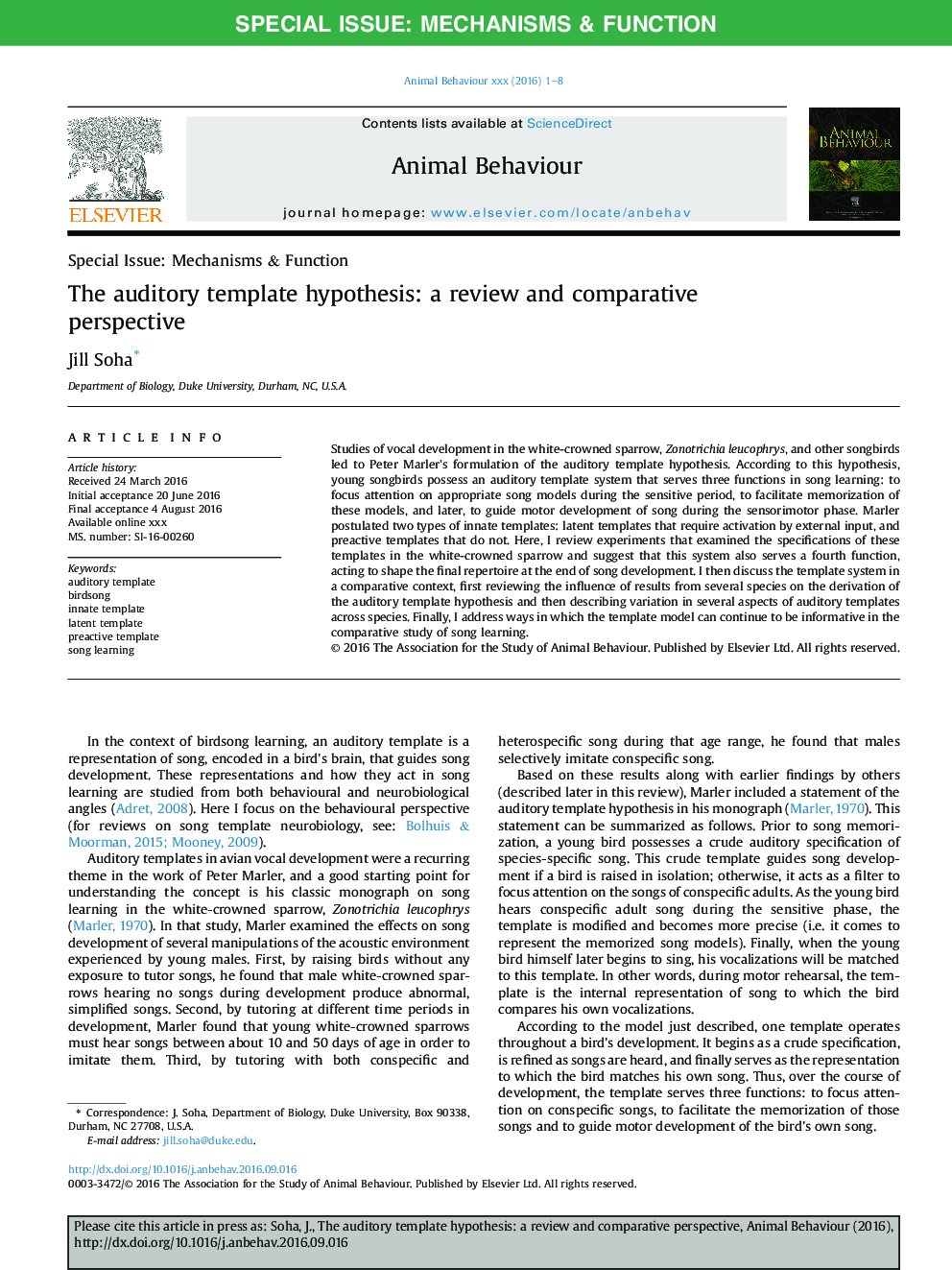| Article ID | Journal | Published Year | Pages | File Type |
|---|---|---|---|---|
| 5538647 | Animal Behaviour | 2017 | 8 Pages |
Abstract
Studies of vocal development in the white-crowned sparrow, Zonotrichia leucophrys, and other songbirds led to Peter Marler's formulation of the auditory template hypothesis. According to this hypothesis, young songbirds possess an auditory template system that serves three functions in song learning: to focus attention on appropriate song models during the sensitive period, to facilitate memorization of these models, and later, to guide motor development of song during the sensorimotor phase. Marler postulated two types of innate templates: latent templates that require activation by external input, and preactive templates that do not. Here, I review experiments that examined the specifications of these templates in the white-crowned sparrow and suggest that this system also serves a fourth function, acting to shape the final repertoire at the end of song development. I then discuss the template system in a comparative context, first reviewing the influence of results from several species on the derivation of the auditory template hypothesis and then describing variation in several aspects of auditory templates across species. Finally, I address ways in which the template model can continue to be informative in the comparative study of song learning.
Keywords
Related Topics
Life Sciences
Agricultural and Biological Sciences
Animal Science and Zoology
Authors
Jill Soha,
